Figures & data
FIGURE 1 Three main concepts of a conversation as an instance of F-formation. The first picture shows how the participants are involved in a behavioral relationship that sustains a stable formation. The second picture shows a conversation as a unit at interactional level that states a set of norms silently accepted by its participants. The third picture shows how these set of norms organize a conversational human territory.
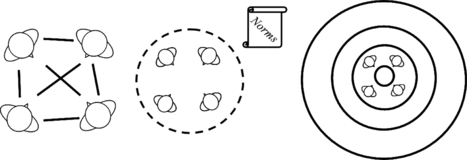
FIGURE 2 The paradigm of territorial organization proposed by Scheflen and applicable to all levels of territorial organization. The o, p, and q spaces belong to the nucleus N, whereas the r, s, and t spaces belong to the region R.
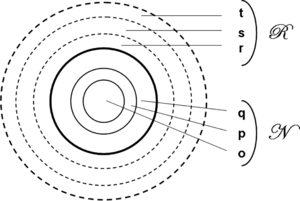
FIGURE 3 From left to right, element, F-formation, gathering, and hub. These are the main territorial fields of Scheflen's classification. Each of them can be seen as increment of the previous one for required space and complexity. In addition, more complex territory can contain simpler ones. The O and P in the picture stand for o and p spaces, whereas the R stands for an unstructured region.
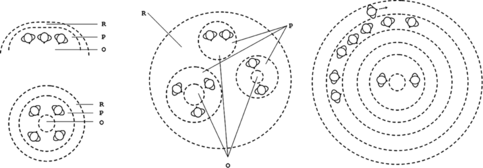
FIGURE 4 An abstract diagram of the framework's architecture. The reaction middle layer provides an interface between action selection and motion generation, supporting the transformation of the sequence of discrete actions A 1, A 2,…, A 8 into continuous motion. Each action activates a reactive behavior that generates a motivation for a certain time interval. Afterwards, the whole set of generated motivations are combined and submitted to the lower motion generation layer.

FIGURE 5 Outline of our reaction generation paradigm. The agent understands its surroundings through its senses. Successively, perceptual stimuli are used for generating motivations to move. Finally, motivations are transformed into physical forces that steer the agent's motion.

FIGURE 6 Two diagrams showing the spatial structure of the sense of vision and proximity. Notice that proportions have not been respected to make the drawing more readable.
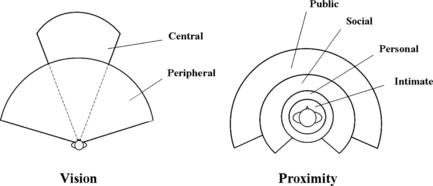
FIGURE 7 A diagram to explain how social situation awareness is realized. Inside the border of the social place, the territorial organization states a set of norms that constrain the avatar's reactivity. Thus, the set of norms maps into a set of reactive behaviors that implements a composition of territorial constraints. The composition blends with other behaviors, leading to a behavioral influence marked on the resulting final motivations M 1, M 2,…, M n .
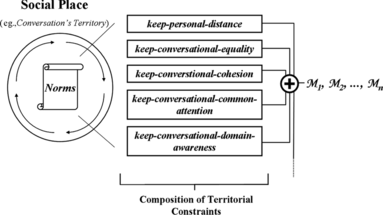
FIGURE 8 A scenario described by a sequence of four figures: (a) The avatar starts moving to reach the destination issued by the user and marked on the ground; (b) The avatar approaches the conversation and the members of it glance at the newcomer; (c) The avatar joins the conversation while the other members move away to make space; (d) The avatar leaves the conversation while the rest of the group rearrange.
